Robert Knox's Blog, page 9
May 10, 2020
The Garden of the Seasons: Birds and Plants Remind Us That the Earth Is Still Turning, Even If We're Kind of Stuck
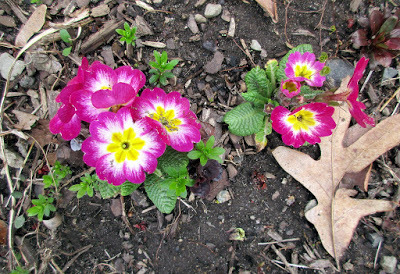

Let's do something hands on. Let's look at the evidence
all around us, the birds, and plants and trees are doing their jobs, right on schedule. Let us take off the heavy gloves of social caution and put on the work gloves, the ones with holes in the fingertips. These holes are pre-installed, free of cost, thanks to heavy use last year, and probably the year before that.
The Covid pandemic is real enough. But pandemic and springtime are separate empires of thought, incommensurable ideas, maintaining their own quite borders. I confess to voting for Spring, for all its routine disappointments. And yet today's forecast for a cold, blustery, partly-cloudy day turned into a cool, breezy and ecstatic celebration of sunny skies, a sublime background for occasional flotillas of fair weather, cottony clouds, turned into an unexpected Mother's Day bonanza.
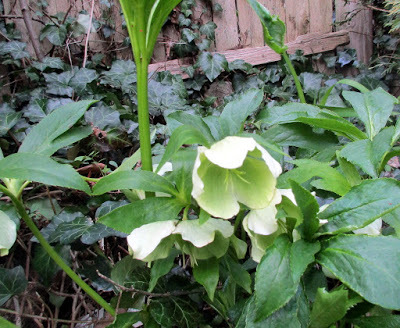 Springtime's poll numbers go up and down regularly with the standard fluctuations in the weather, but on the whole I am a firm supporter, casting party line approval for April, May and June. Arguably, June is summer, and I am always happy to arrive there, but feel no need to rush through the early floats in this luxurious parade through the season of hope and renewal. Already, April's bounty floats down to the pavement.
Springtime's poll numbers go up and down regularly with the standard fluctuations in the weather, but on the whole I am a firm supporter, casting party line approval for April, May and June. Arguably, June is summer, and I am always happy to arrive there, but feel no need to rush through the early floats in this luxurious parade through the season of hope and renewal. Already, April's bounty floats down to the pavement.
 The trees weep blossoms, open-faced white like those on our weeping cherry. The promising pink buds curled tight as shuttered lips on wild cherry in the woods we walk now have opened and ornament the trails. The young street trees turn the skyline lemon-lime with fresh new leaves. While their heavy forbears show tiny blossom, catkins, or bare branches against the deep blue skies.
The trees weep blossoms, open-faced white like those on our weeping cherry. The promising pink buds curled tight as shuttered lips on wild cherry in the woods we walk now have opened and ornament the trails. The young street trees turn the skyline lemon-lime with fresh new leaves. While their heavy forbears show tiny blossom, catkins, or bare branches against the deep blue skies. 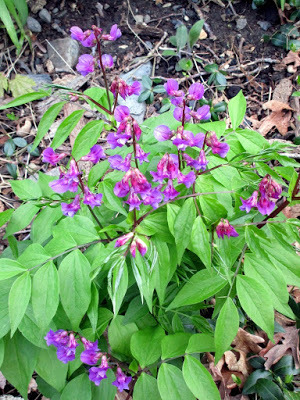 In the front and backyard gardens, dried leaves and wintry grasses give way to new greens: and to the Japanese Primrose in the top photo on this page; the reliable spring bloomer Bleeding Heart; the Hellebores (Lenten Rose); and in the final pic at the bottom of the page with the oddly delightful name of Spring Vetch.
In the front and backyard gardens, dried leaves and wintry grasses give way to new greens: and to the Japanese Primrose in the top photo on this page; the reliable spring bloomer Bleeding Heart; the Hellebores (Lenten Rose); and in the final pic at the bottom of the page with the oddly delightful name of Spring Vetch.
Published on May 10, 2020 15:08
May 4, 2020
The Garden of the Seasons: Restoring the Sidewalk Strip
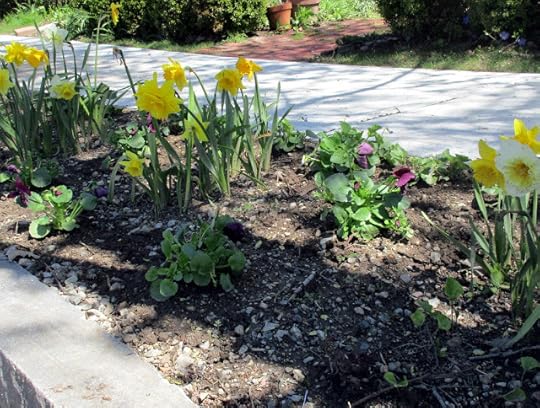
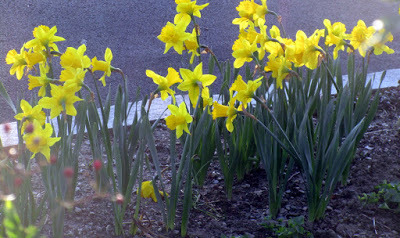 When the company hired by the city last fall to rebuild our street and its sidewalks got to our house they told me I would have to remove all my plantings from the strip of soil between the sidewalk and the curb stone. New cement sidewalks, new curb stones, and new soil in between were being provided by the city.
When the company hired by the city last fall to rebuild our street and its sidewalks got to our house they told me I would have to remove all my plantings from the strip of soil between the sidewalk and the curb stone. New cement sidewalks, new curb stones, and new soil in between were being provided by the city.The most likely reason why those sidewalk strips exist on residential streets such as our own is to plant trees.
Trees are good for neighborhoods. They're good for the whole community. They clean the air, removing carbon dioxide from the atmosphere. The reason we have an atmosphere breathable for human beings is the presence of green plants. Earth's forests and trees and green plants everywhere habituated a plant capable of supporting large, air-breathing land animals.
No trees were growing on the strip of dirt in front of our house, so we put our name on our list for the city to plant a tree, which the city did a few years later. Then a second tree was added. They've grown, providing more shade for our house, front yard, and our street.
The rest of the sidewalk strip held the tattered remains of lawn grass. But these areas by their size and position are not hospitable to lawn grass. They're too small to mow. No one takes care of them. And lawn grass is a non-native plant that grows poorly in Northeastern cities and towns, requiring frequent watering, fertilizing, weed-killing and re-planting when the dead spots appear. So we didn't plant grass in our strip of dirt between the trees.
We planted perennial and annual flowers. Since the strip is a hot, dry spot -- surrounded by pavement and automobile exhaust, it is vulnerable to road salt and visitations of urban waste -- we planted a patch of Autumn Joy sedum, because sedums survive in hot, dry climates. We planted flowering annuals, rotating them through the season. Our daughter planted a patch of crocuses and grape hyacinth for spring color. I added some hardy mums, some of them hardy enough to return each year.
Those were the plants we lost when the city's contractor ripped up the sidewalks and started over.
But a new start is also a new opportunity. A long trough of new dirt is a blank canvas. Unwilling to face a completely blank canvas when a new spring rolled around, I decided to look for some spring bulbs. But the contractor didn't finish work until mid-November. When I went to the garden section of a big box store, no bulbs were to be found anywhere. Everything was Christmas greens. However I asked a guy in work clothes if the store still had any bulbs -- and got lucky. He confided that he had just thrown the last of them out, leaving them in a big box next to the store's dumpsters.
He suggested I go see if they were still there. I took the hint.
The bulbs were there. A big box, with netted sacks containing probably a couple hundred daffodil bulbs altogether -- all daffodils, nothing else. I rescued a half dozen sacks and tossed them in to the trunk of the car.
So the new composition of the sidewalk strip began on a raw Thanksgiving morning when my daughter Sonya and I planted eighty or a hundred bulbs -- those fat spuds of floral potential -- in the Thanksgiving cold, a couple hours before the family feast.
We waited five bare months to see if they would bloom, and when they did, happily, springfully, I began to look for what I could find in Covid Time to keep them company.
In April green plants spring up, free of cost, out of the ground. Which is a good thing, especially this year, when shopping for anything, or taking yourself out in public, can be a fraught, restriction-hedged errand.
So I looked closer to home, i.e. our own backyard, for candidates for missions Sidewalk Strip. Violets, I noticed, the kind of New England wildflower that grows in your lawn unless you poison them. I transplanted them from the weed-addicted soil of the backyard perennial garden; some already had buds, I hoped they would all bud and flower.
Today, as I look around, they are. I found other flowering weeds -- another world for wildflowers whose names I do not know -- and added them to the mix. I added in some newly prominent, suspiciously prevalent, fast-growing plants -- I suspect them of being invasives.... but these, joined with violets and daffs will do for spring color.
Then I broke down and masked myself and visited a small garden center where I found some small planters of lavishly priced pansies. I bought three of these, divided the contents and added them to the pebble-strewn soil of the strip.
These will do for spring. We have color, we have life.
I will have to find more plants, more color to add, and soon, because the daffs after a beautiful month's showing are beginning to fade.
So that's the formula: Add rain, repeated squattings followed by subsequent lower back complaints; two weeks of subnormal chill for the end of April, plus a surprise, summer-like May weekend -- and there you have it, one floral sidewalk strip, restored to the homeowner's -- temporary -- satisfaction
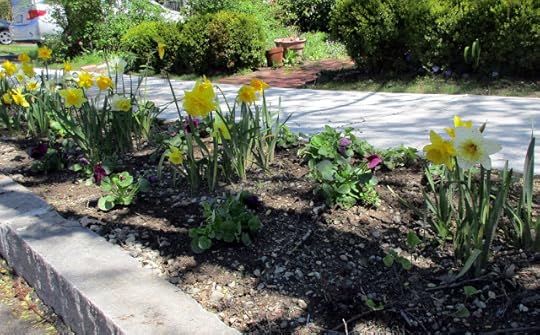
Published on May 04, 2020 20:54
The Garden of Verse: In the Locked-Down Spring of 2020, Verse-Virtual Looks Into the Hearts of People Much Like Ourselves (or Not)
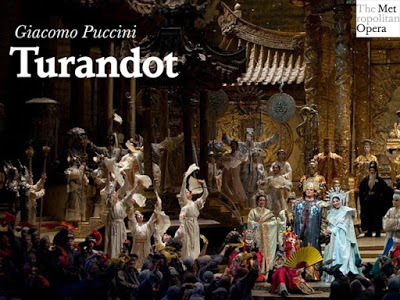 The May 2020 issue of Verse-Virtual is now online. Thanks go to Managing Editor Jim Lewis and guest editor Tom Montag.
The May 2020 issue of Verse-Virtual is now online. Thanks go to Managing Editor Jim Lewis and guest editor Tom Montag. I have three poems in this issue. The crazy one, based on a highly unlikely premise is titled
"Trump Watches 'Turandot' on Late Night TV." To explain the unlikelihood: 'Turandot' is an opera by Puccini set in China. It's about selflessness and, ultimately, love.
I watched it recently -- not exactly on 'late night TV,' but on a screening of a Metropolitan Opera performance of the opera taped live a few years ago. These broadcasts are being screened on the Met's own channel, a new free offering every evening, but just for that one evening. You can, but don't have to, watch them late at night.
The greater unlikelihood has to do with that other proper name that appears in the title of the poem.... But, just suppose, this unlikely intersection came to pass. Here's an excerpt from "Trump Watches 'Turandot' on Late Night TV":
People, the ordinary ones who live on the streets,
gather outside the temples, read the news on the billboards,
are nervous, fearful, they cower
amid presentiments of catastrophe
Even the bureaucrats are fed up, frightened, and desperate to
go home, lock their office doors behind them,
and turn off the spigot
of blood that runs through the capital..."
He's bored. What else is on?
He calls for Conway, or whichever of his stooges
hangs outside his door
to demand that publicly funded TV
screen only biops of famous white males
who succeed and triumph without a single dime of their
father's money.
Everything they touch turns to money!
But, holy moly, who are all these people, look at them!
Dirty, ragged clothes, crowds of them—they make me sick... To read the rest of the poem, click the link Trump Watches Turandot
My other, shorter poems in this issue, "Saturday Soul,"
and "In a Younger Day," both have to do with memories
of earlier days.
You can find them at the same link.
Published on May 04, 2020 14:00
April 21, 2020
The Tangible Spring of 2020: Something You Can Touch -- No Virus on Spring Blooms
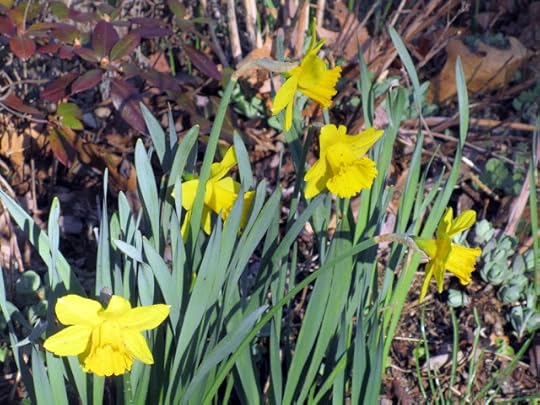
In a world where we're afraid to take off our gloves and touch something, here's something you don't have to be afraid of touching: Spring. Plants.
New blooms; no virus.
So I happen to love Aprils. They have their ups and downs, often in the same day. Writing this on Tuesday, the day after Earth Day, we are currently waitng for the sun to shine, as yesterday's forecast said it was going to do, at least for a while, before taking our walk.
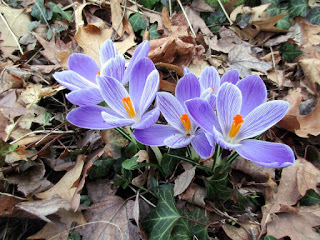 I'm watching the wind suddenly gust and blow off the last white petals from a beautifully blossoming weeping cherry tree. They disappear, these precious petals, as I look on. It's like watching time disappear.
I'm watching the wind suddenly gust and blow off the last white petals from a beautifully blossoming weeping cherry tree. They disappear, these precious petals, as I look on. It's like watching time disappear. But comings and goings are what April is all about.
It's free, and it's safe. It's safe to put your sands in the soil, to work it, and prepare it for seed. You can also put your hands on on leaves, on stems, flowers. Cut them even. You can pick up last year's dried brown leaves, which is mostly what we do here in the first weeks of April, after leaving them as a natural winter blanket over all the garden, both front and back yards, to cover and hold the earth.
 Now they are ready for us to pack them up by the bagful. Twenty 'yard waste' bags, probably more. We have a very large oak tree, and a few other trees.
Now they are ready for us to pack them up by the bagful. Twenty 'yard waste' bags, probably more. We have a very large oak tree, and a few other trees. And when you rake away the leaves, you expose the new growth. That's the season's biggest treat: seeing new growth pop up.
Earth is pregnant, and new deliveries come by the day.
I took these photos at the end of March and the first weeks of April. I love the rough imperfection of this season of new growth.
The first daffodils break the ground and then bloom with signs of the winter still around. Leaves on the ground, dried stalks from perennial shrubs, as seen in the top photo. I enjoy looking at plants in situ, especially if that 'situ' -- situation; surroundings -- is a little wild.
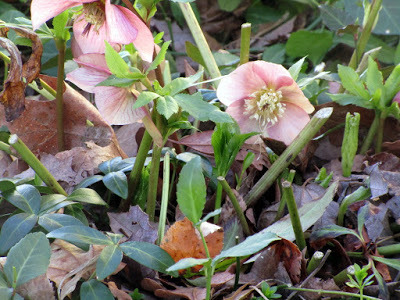 There's nothing very wild about living in Quincy, Mass. But if you give nature even a little space, things happen, as in the second photo, Japanese primrose. The plant blooms very early, because they're very small. This photo exaggerates their size... But early in the season they have space to get the light they need to bloom, because the perennials that grow up higher and crowd this space haven't begun growing yet; man of them haven't even sprouted. The primrose have their close-ups surrounded by bare ground and the dross of last winter.
There's nothing very wild about living in Quincy, Mass. But if you give nature even a little space, things happen, as in the second photo, Japanese primrose. The plant blooms very early, because they're very small. This photo exaggerates their size... But early in the season they have space to get the light they need to bloom, because the perennials that grow up higher and crowd this space haven't begun growing yet; man of them haven't even sprouted. The primrose have their close-ups surrounded by bare ground and the dross of last winter. 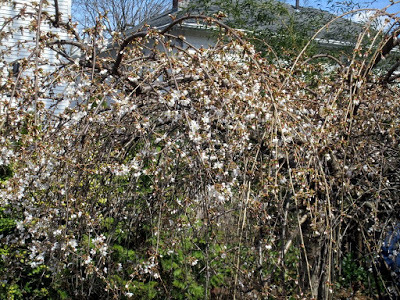 Crocus, the famously early starters among the common bulbs, are shown in a photo blooming against a curbstone. Others bloom among the dried oak leaves we haven't managed to clear yet.
Crocus, the famously early starters among the common bulbs, are shown in a photo blooming against a curbstone. Others bloom among the dried oak leaves we haven't managed to clear yet. Another classic early bloomer is the Lenten Rose (hellebores), the fourth photo down.
The Japanese weeping cherry tree I spoke of earlier was just beginning its bloom when I took this photo (the last on the page). That's the way things are this time of year. Things happen fast in April.
Published on April 21, 2020 21:57
April 8, 2020
The Garden of Verse: A World of Wonder and Creativity in April's Verse-Virtual, Magicked Up Before Eveything Changed
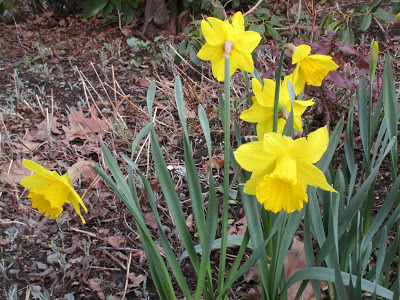 Here's my take on some of the poems that spoke to me in the April Verse-Virtual... Everything in this issue so wonderfully seems to evoke the world we loved, or worried over, or had various issues with while also delighting in the countless wonders of being alive, even the most quotidian... all of this written before, of course, our world changed so radically. So, maybe in light of the more narrowed existences we are all experiencing, I am particularly aware of the presence of wonder in these poems. In Steve Klepetar's "My Father Quotes Goethe at the Restaurant," when the recitation begins -- "something about golden apples" -- an ordinary hour suddenly became extraordinary. "... The waiter walked by and stopped to listen. Soon all the waiters were gathered there as my father went on through several scenes. One had tears in his eyes, another stared at us in wonder." I love poems when some kind of special experience breaks away, organically or not, from the facts at hand and lifts us all, at least a little ways, out of ourselves. I found a similar pleasure in his poem about the "Magic Girls," who one moment are simply cousins, making Halloween decorations, and then -- wonderfully -- achieve poetic lift-off: "How talented they were, those magic girls who sang like wild angels and climbed trees and brought home trophies every week."
Here's my take on some of the poems that spoke to me in the April Verse-Virtual... Everything in this issue so wonderfully seems to evoke the world we loved, or worried over, or had various issues with while also delighting in the countless wonders of being alive, even the most quotidian... all of this written before, of course, our world changed so radically. So, maybe in light of the more narrowed existences we are all experiencing, I am particularly aware of the presence of wonder in these poems. In Steve Klepetar's "My Father Quotes Goethe at the Restaurant," when the recitation begins -- "something about golden apples" -- an ordinary hour suddenly became extraordinary. "... The waiter walked by and stopped to listen. Soon all the waiters were gathered there as my father went on through several scenes. One had tears in his eyes, another stared at us in wonder." I love poems when some kind of special experience breaks away, organically or not, from the facts at hand and lifts us all, at least a little ways, out of ourselves. I found a similar pleasure in his poem about the "Magic Girls," who one moment are simply cousins, making Halloween decorations, and then -- wonderfully -- achieve poetic lift-off: "How talented they were, those magic girls who sang like wild angels and climbed trees and brought home trophies every week."Other poems bring home these trophies at well. It's the madness of spring, perhaps, an idea I take from David Graham's poem "First Day of Open Windows." The speaker is watching the truck traffic on a state road when the spirit of Walt Whitman, bard of the open road and "Song of Myself" inhabits the moment: "in exactly the American tunefull of stinkand clank, two men on a loading docksharing a cigarette and talking shit..." Others share the tune, such as "the lone cardinal," narrating the tale, the poem tells us, in his own understanding.
The American open road tells a tale, called an "omen" here, in William Greenway's "Black Pick-up":"and so I pictured,just for a moment, me, migrant,squatting in the empty bed, my hair blowing backwards,on the way to some green fieldof sweet watermelon manna..." Read the rest of the poem to see where the omen leads.
The elevated moment takes place in the mind of the speaker of the poem in Martin Levinson's poem "Making Contact," a kind of classic demonstration of the extended metaphor. A marital conversation turns into a sort of 'inside baseball':
"I haven’t decided what pitch to fling to the catcher sitting in my skull, who’s motioning for a fast ball, which may not be the best idea," ... because, as the speaker tells us, the batter might be expecting just that. We know how important those 'expectations are.' Just ask the Houston Astros.
On the theme of memorable moments -- the unexpected kind -- Penelope Moffet's complex, beautifully written poem "Trust" has a big cat in its tank. "By a creek in the woods a flicker of movement and there she is, upwind of me, fifteen feet away, cougar I’ve been seeking for decades. She doesn’t see me as she comes my way. Only when I stand and shout does she lift her head to stare into my eyes." This poems is about as close as I've come to being stared at by any comparable creature. "Trust" delivers a complex vision of animals and, especially, people, some of whom, its ending suggests, you shouldn't trust very far.
Mary Makofske's poem "Ask Her" depicts the state of mind of a student who resists the pull of a poem's word magic. To the poem's 'her,' an older student, the poem in question is a flight from responsibility. "She fought the current, built a dam against the poem’s seduction.It was clear she’d had enough comings and goings, alibis, evasions." Well told, the poem is a tale with a persuasive conclusion.
Robert Wexelblatt's "Bolting" isn't about wonder, but it is one. Too big for a brief description, the poem's rhymed stanzas, alternating with the free verse passages, provide a kind of commentary: "Her hair’s fragrance is so sweet yet his liberty’s so dear; tonight he’ll kiss her feet— tomorrow he’s not here." And I can't help quoting the stanza that's like an entire ballad in itself, implying the frame of the tale and providing the perfect, down-through-the-ages refrain: "Consolation is the pleasure of soothed pain. They were sometimes one: a May night in the rain when they got drunk and laughed like they’d gone insane; when she crooked her finger saying, Do that again. Consolation is the pleasure of soothed pain."
Wonder is dreamlike in Michael Gessner's "Irving's Piazza," the Hudson River retreat from which one of the first 'name' American writers found the components of his reveries. The poem's speaker finds his own inspiration in a Southwestern setting, where "the moon’s lostdelirium embraces the memoryof casual sylphs, enchanted poets..." Find the rest of this poem, and so many others at http://www.verse-virtual.org/poems-an...
Verse-Virtual April 2020
Published on April 08, 2020 11:59
April 3, 2020
The Garden of Selfless Engagement: My Poem on Emerson's and Thoreau's Encounter with the Bhagavad-Gita in April's Verse-Virtual
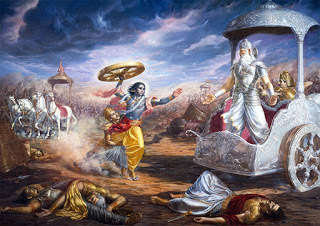 The Bhagavad-Gita, a 700-verse Hindu scripture written thousands of years ago (estimates vary) as an episode in the epic poem called "Mahabharata," a kind of encyclopedic encapsulation of history and philosophy from a time well before the start of Western Civ, had its moment during the late 60s and no doubt is still studied by those interested in "Eastern" ways. As I discovered recently, in reading about the great 19th century New England thinkers Emerson and Thoreau, classical Hindu thought and the "Gita" was very influential back then as well. Most commentators sum up its message as an argument for selfless action in the complex and imperfect arena of human affairs. In the middle decades of the 19th century, the outstanding moral issue for many Americans -- and certainly for the pair I'm concerned with here -- was slavery. And, I think, we have our own equivalents today. I am posting the poem below. You can find others by me, and by 39 poets in all in the April 2020 Verse-Virtual here Verse-Virtual April 2020
The Bhagavad-Gita, a 700-verse Hindu scripture written thousands of years ago (estimates vary) as an episode in the epic poem called "Mahabharata," a kind of encyclopedic encapsulation of history and philosophy from a time well before the start of Western Civ, had its moment during the late 60s and no doubt is still studied by those interested in "Eastern" ways. As I discovered recently, in reading about the great 19th century New England thinkers Emerson and Thoreau, classical Hindu thought and the "Gita" was very influential back then as well. Most commentators sum up its message as an argument for selfless action in the complex and imperfect arena of human affairs. In the middle decades of the 19th century, the outstanding moral issue for many Americans -- and certainly for the pair I'm concerned with here -- was slavery. And, I think, we have our own equivalents today. I am posting the poem below. You can find others by me, and by 39 poets in all in the April 2020 Verse-Virtual here Verse-Virtual April 2020 Concerning Engagement
In "Emerson and Thoreau Meet the Bhagavad-Gita," the poem that I hope some day to write, our two great American spokesmen lean on the wisdom of another age, in another dispensation of human consciousness, to seek a guidance for their conduct, or so I see the matter, in the crisis of their day.
The Bhagavad-Gita, one tale -- one narrative gesture within a gigantic cycle of mythical stories dating from a millennium we don't have on our side of the world -- in which a god not easily understood in Western terms, Krishna, speaks to the chief warrior of his age, Arjuna, on the doorstep of the his culture's primeval "World War" as he decides whether or not to participate in what is essentially a civil war, as all wars are, if humanity is your family, and which he knows will result in great suffering and stupendous loss of life.
Yet Krishna, Lord of All the Senses, Friend of the Afflicted, (but also Beloved Cowherd and possessor of 105 other common titles) explains the history and meaning of almost everything in order to show the reluctant warrior hero why he 'must play his part' in this most terrible battle of the world in which he is fated, destined, and therefore must choose to live.
Just so Thoreau, and more reluctantly Emerson, came not only to condemn slavery, and to aid in the escape of fugitive slaves, but to praise the violent deeds of the anti-slavery martyr John Brown, even at the risk of plunging their nation into what proved to be an enormously costly, bloody, endlessly consequential, Civil War,
leading us to consider, What Do We Do Now?
Bio Note: I write poems, fiction, and newspaper copy for The Boston Globe. My novel Suosso's Lane treats the Plymouth, Mass. origins of the Sacco-Vanzetti case exactly 100 years ago. A second novel won a competition for a work of speculative fiction, though still has no publication date (but who's complaining?). I've had poems recently in The American Journal of Poetry and New Verse.News. A couple of the poems below are taken from my recent poem-a-day project begun, for no particular reason, in early February.
Published on April 03, 2020 11:19
March 28, 2020
The Garden of the Printed Book: Some Ways to Pass the Time in Viral Lock-up By Happily Turning Pages
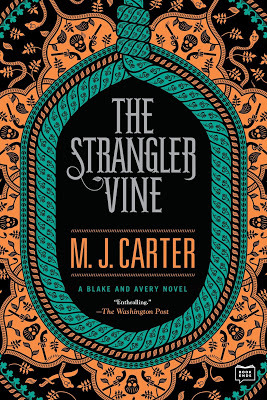 So how's the hunkering down, walking outdoors, and virtual interaction lifestyle suiting you? Phone time or Facetime? Zoom in, or simply crash and die? Six feet between us still better than six feet under? I would add to the roster of indoor activities most of us are surviving with by going back to an actually ancient, but viable human-centered technology -- the book. Which is accessed by "reading." And requires the application of human physical and mental senses. And so, based on my own recent downtime experience, a short list of recommended reads. But first, my friend Karl recently wrote me about reading Nathaniel Philbrick's book "Mayflower," a history of the Plymouth Colony from its founding through King Philip's War. A good choice to start with. There are lots of reasons why this book, published some years ago, is worth a read, one of them being this year's celebration of the 400th anniversary of the founding of Plymouth. Another, as Karl points out, is the book's treatment of King Philip's War, Colonial America's first 'Indian War,' a neglected subject in American history courses, and a permanent stain on the nation's human rights record. The history of the relations between the Europeans who arrived here in the 17th century (and then kept on coming) and the indigenous peoples who had been living here for thousands of years will never, I suspect, cease to be relevant. In my opinion, the history of those relations still calls out for something like the full "Truth and Reconciliation" process carried in South Africa. From history let's move to fiction. The best novels often seem to me to be "history as interpreted by human imagination" -- and repurposed for various needs by the fundamental human gift of storytelling. I've recently enjoyed three such novels. "The Strangler Vine," by M.J. Carter, is first rate historical fiction set in India during its rule by the East India Company in the early 19th century. I love novels that give me a sense of what it felt like to 'be there' in some other place at some other time. The was clearly a historian, and has published nonfiction books. Since writing "The Strangler Vine" -- a plant found in the Indian forest that suggests a comparison to the East India Company's hold on India -- she has added two more fictions using the same central characters, one of them "The Infidel Stain," I heard read on discs and found stay-in-the-car-and-listen engrossing. In that book the main characters from "Strangler" are back in England during the period of the Chartist Movement, a time of political upheavals: ghastly crimes, Victorian London, political intrigue, radical politics -- I loved it.
So how's the hunkering down, walking outdoors, and virtual interaction lifestyle suiting you? Phone time or Facetime? Zoom in, or simply crash and die? Six feet between us still better than six feet under? I would add to the roster of indoor activities most of us are surviving with by going back to an actually ancient, but viable human-centered technology -- the book. Which is accessed by "reading." And requires the application of human physical and mental senses. And so, based on my own recent downtime experience, a short list of recommended reads. But first, my friend Karl recently wrote me about reading Nathaniel Philbrick's book "Mayflower," a history of the Plymouth Colony from its founding through King Philip's War. A good choice to start with. There are lots of reasons why this book, published some years ago, is worth a read, one of them being this year's celebration of the 400th anniversary of the founding of Plymouth. Another, as Karl points out, is the book's treatment of King Philip's War, Colonial America's first 'Indian War,' a neglected subject in American history courses, and a permanent stain on the nation's human rights record. The history of the relations between the Europeans who arrived here in the 17th century (and then kept on coming) and the indigenous peoples who had been living here for thousands of years will never, I suspect, cease to be relevant. In my opinion, the history of those relations still calls out for something like the full "Truth and Reconciliation" process carried in South Africa. From history let's move to fiction. The best novels often seem to me to be "history as interpreted by human imagination" -- and repurposed for various needs by the fundamental human gift of storytelling. I've recently enjoyed three such novels. "The Strangler Vine," by M.J. Carter, is first rate historical fiction set in India during its rule by the East India Company in the early 19th century. I love novels that give me a sense of what it felt like to 'be there' in some other place at some other time. The was clearly a historian, and has published nonfiction books. Since writing "The Strangler Vine" -- a plant found in the Indian forest that suggests a comparison to the East India Company's hold on India -- she has added two more fictions using the same central characters, one of them "The Infidel Stain," I heard read on discs and found stay-in-the-car-and-listen engrossing. In that book the main characters from "Strangler" are back in England during the period of the Chartist Movement, a time of political upheavals: ghastly crimes, Victorian London, political intrigue, radical politics -- I loved it.
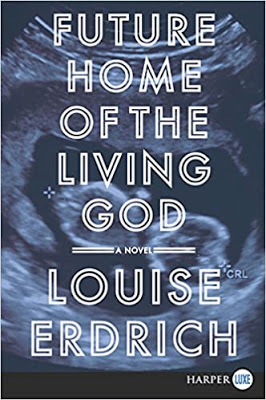 "The Future Home of the Loving God" is the most recent novel by Louise Erdrich, who has written many books dealing with the present and past days of a Native American community in Minnesota. This book fits the current vogue for a dystopian fiction, triggered by -- guess what -- a biological threat completely destabilizing American society. Erdrich is a brilliant character creator, and readers of her other books will note some similarities between the key players here and characters in her previous books. In this book, explaining its title, her pregnant narrator and other Indian characters are obsessed with the Native American Roman Catholic saint Blessed Kateri Tekakwitha -- the name of a church, I recalled, from our days in Plymouth.
"The Future Home of the Loving God" is the most recent novel by Louise Erdrich, who has written many books dealing with the present and past days of a Native American community in Minnesota. This book fits the current vogue for a dystopian fiction, triggered by -- guess what -- a biological threat completely destabilizing American society. Erdrich is a brilliant character creator, and readers of her other books will note some similarities between the key players here and characters in her previous books. In this book, explaining its title, her pregnant narrator and other Indian characters are obsessed with the Native American Roman Catholic saint Blessed Kateri Tekakwitha -- the name of a church, I recalled, from our days in Plymouth.Finally, "Orfeo" is a timely work by another prolific American novelist, Richard Powers. I loved his big recent book about the role trees play in Earth's preservation, "The Overstory."
 "Orfeo" is about a musical genius -- Powers' books are always seeped in a thorough knowledge of some field of the arts or sciences -- who is also an amateur chemist who gets in trouble by experimenting in creating genetic changes in -- guess what -- microbes. The book's evocations of various musical works (both famous masterpieces and fictional works created by our spectrum-like hero) are beautifully written. I think I would have appreciated the book on another level if I knew more about, one, music theory or, two, biochemistry. But "Orfeo" is another character-driven thriller (like Erdrich's book), this one impelled by a post-9/11 -- wow, remember that -- theme of government over-reach in the name of security.
"Orfeo" is about a musical genius -- Powers' books are always seeped in a thorough knowledge of some field of the arts or sciences -- who is also an amateur chemist who gets in trouble by experimenting in creating genetic changes in -- guess what -- microbes. The book's evocations of various musical works (both famous masterpieces and fictional works created by our spectrum-like hero) are beautifully written. I think I would have appreciated the book on another level if I knew more about, one, music theory or, two, biochemistry. But "Orfeo" is another character-driven thriller (like Erdrich's book), this one impelled by a post-9/11 -- wow, remember that -- theme of government over-reach in the name of security.I don't want to hear anybody say they have nothing to do. Maybe "self-quarantining" is simply the universe's way of saying "drop everything and read a book."
Published on March 28, 2020 21:47
March 16, 2020
The Garden of Verse: Family Stories Abound in Verse-Virtual March 2020, from Talking Back to 'Daddy' to the Crime That Destroyed a People's 'Icons'

Poems in Verse-Virtual's March2020 issue told important stories with great skill. Subjects include a re-assessment of the truth behind Sylvia Plath's epochal poem "Daddy," the circumstances behind a first encounter with the muse, and the devastating consequences of a historic disaster. Find these and many other fine offerings in Verse-Virtual.org March 2020
Michael Gessner's "Plath's Father" catches so much about the structure and rhythmic appeal of Sylvia Plath's famous poem "Daddy" while questioning the poem's treatment of its ostensible subject, her father. As "Plath's Father" argues, "Daddy's” denunciation of fascism and patriarchal brutality doesn't appear to have much to do with the biography of her father's shortened life:
"It doesn’t quite seem to mixPanzer-man and Harvard entomologist,or the German language ‘obscene’. It was the language your parents spokebefore making the love that was you."
"Plath's Father" is a thoughtful, strongly written response to a widely anthologized poem which at the time of its publication seemed to catch the anger of the rebellious sixties. This sympathy for a 'Daddy' definitely deserves a read.
David Graham's "Your Poetic Career" is another poem that looks back, not on a classic poem, but on a poet's own beginning. A story poem set in undergraduate days, it catches the mood of youthful 'thinking' and insecurities and finds an implicitly sensual imagery that describes what's so -- uh, likable -- in another student's work:
"She's so damn good, her lines slithering like anacondas of dirty ice and lonesome fire and all kinds of stuff you'd never in a million years come up with, so for a few shiny minutes you are utterly swallowedby the beautiful Becca-mind,"
...while also a youthfully "bothered" by the rest of the package. A fun and convincing poem.
Another poem that tells a story, Jim Lewis's "penny loafers" recalls a hungry boy, born in 1929 among a parade of siblings "that stretched
across that great depression
like a trans-continental railroad..."
The poem's imagery and diction catch the mood of the era, especially its Depression generation theme of making do with a watery-soup existence. The mortifying second-hand shoes of the poem's title lead to the fitting word play at the poem's conclusion that I won't spoil by repeating here.
Michael Minassian's "The Icons" looks back as well, from a family perspective, to a grandmother's remembrance of the year 1915, when
"history exploded
like a sleeping grenade,"
destroying both her brother, their church and "all the icons" -- a word that serves for both a concrete meaning and an entire community's world view. Actions tell the story here. The grandmother's post-genocidal world view is evoked by her act of
"dumping the coffee grinds
into the backyard
where nothing ever grew..."
The March 2020 issue is rich in family stories. Alan Walowitz's "My Father Stops at Corners" paints a portrait in a poem whose structure seems to capture its subject's path through life. I particularly enjoyed the long and garrulous sentence that begins with a reference to death -- "He knew he wasn't due to die till 68" -- then works through several other subjects, including its subject's physical resemblance to his own father -- before returning to the theme of a father's death with a striking image,
"which now he owned—
hanging low over his head
like the black fedora
pulled tight over his eyes."
A memorable portrait, indeed.
Tom Montag's author's note to "Three Poems from 'The Woman in an Imaginary Painting'" series is a poem in itself. "I don't know what started this, nor how it will end, but here we go, for as long as she continues," he tells us. "Poets may think they are in charge of their work, but really they're not, as this series is proving to me daily."
These poems flow like time does. As thought does. They're about one thing, and everything. I love its transition from the woman's perspective, to the artist's, and then back to the woman's own self-examination.
"Because she always loved art
she posed for him.
Because it was unlike anything she had ever done.
Because she wanted to impress her friends..."
Every line feels just right and, perhaps, inevitable.
And there's lots more where these came from at http://www.verse-virtual.org/poems-and-articles.html
Published on March 16, 2020 22:14
March 11, 2020
"American Rot": My Poem on the Steady Decay of the American Political System
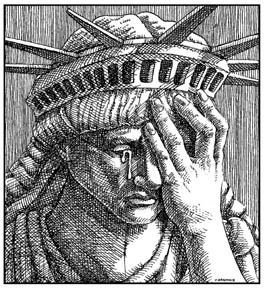
We can see from from Americans' increasingly nervous response to the spread of the Coronavirus just how much damage can be done by three years of an incompetent, corrupt national administration to the nation's health and well-being. By government that is based on loyalty to a criminal boss rather than to the public good, that puts the interest of party over the interests of law, equity, and the needs of ordinary citizens. And by a form of politics that ignores 240 years of precedent and law to insure "winning" at any cost, including outright cheating, voter suppression, and encouraging interference by foreign governments that intend us no good.
The spread of the contagious virus also answers the question of who needs a 'big,' but also well functioning government? Apparently every country in the world -- even this one... Who needs public heath care? Who needs a national health care system that guarantees all have access to health care without worrying about how to pay for it?... Americans do.
Well before the arrival of the new plague, back during the Senate's farcical impeachment 'trial' -- which now seems like democracy's last, wasted chance -- I wrote the poem below, "American Rot." It appeared in print earlier this month in the March 2020 issue of Verse-Virtual.
American Rot
Sepsis gone too far
Surgery the only option,
cutting away the rot,
joint by joint,
cell by cell
We surrender a toe,
or two,
almost willingly
Who walks any more
anyway,
while we stare,
'devicively' at screens
Take the foot, why don't you,
and perhaps a hand
Give a hand for your country,
won't you?
What price the oblivion
of endless rot?
Sepsis of the spine
the brain stem
Sepsis of the body,
the uselessly failing limbs
they wave in the wind
like the flags of
forgotten nations
that went this way
Weimar, Athens, the Roman Republic
the body politic
flailing, feebly
Proscription for the intelligentsia
Salutes for the surgeon!
for the final solutions
to indelible conditions,
prior or whatnot,
that weaken the nation
Give him the pistol
now, why don't you
See how easily
he finds a trigger
with his teeth
You can find my other poems and those of 43 poets in total in the March Verse-Virtual here
http://www.verse-virtual.org/poems-and-articles.html
Published on March 11, 2020 21:16
March 9, 2020
Poets 'Go Deep" in the new March 2020 Verse-Virtual
 I am impressed by the poems in March 2020 issue of Verse-Virtual that 'go deep' -- full disclosure: I served as the guest editor for this issue. Read them for yourself athttps://prosegarden.blogspot.com/2020/03/the-garden-of-verse-real-and-imagined.html I'm talking about poems such as Alarie Tennille's poem "Taking Forever One Day at a Time," with splendid details in every stanza. For example:
I am impressed by the poems in March 2020 issue of Verse-Virtual that 'go deep' -- full disclosure: I served as the guest editor for this issue. Read them for yourself athttps://prosegarden.blogspot.com/2020/03/the-garden-of-verse-real-and-imagined.html I'm talking about poems such as Alarie Tennille's poem "Taking Forever One Day at a Time," with splendid details in every stanza. For example: "hearing your voice in conversation
downstairs before realizing
that you’re talking to the cats
in the same serious tone you use
with plumbers"
The poem builds on evocations, from here, from fond recollections, little things, habits -- holding the speaker's hand crossing streets, writing disparaging comments in the margins of books he reads -- to build a word portrait of a 'forever' relationship. A marvelous poem about intimacy.
And by the imagistic tour of the stages and struggles of putting together a successful lyric offered by Kate Sontag in "Before It Was A Poem," in lines such as these:
"In the house of do-over dreams
the writer sleeps on pencil shavings
and eraser dust, unlearns standard
grammar skills, relinquishes any
obsession with formal elements
of syntax, diction, parallelism."
Yes, "the house of do-over dreams." Sound familiar? Also, Kate's poem "The Poet and the Bee" with its the noirish reference to the classic "Black Dahlia" crime-story to give the poem its sting. From noir mystery –
For all we knew
"she could have been lying,or believed her own lie..."
This poem's buzz takes us to the unexpected prophetic revelation:
"Call it style. Call ita singer whose ghost was a missing guitar.So this was poetry."
Mystery is the mood as well in Penny Harter's enigmatic poem "The Oracle" about a creature, perhaps half-imagined, known by signs but never seen:
"The oracle predicts without speaking,
slaps its tail for emphasis, eludes our traps.
It knows we are bigger than it is,
has learned that we don’t care to heed
the messages it brings us from the deep."
The theme of human bonds to the wild species that share our universe plumbs the depths of her poem "Snowy Owl," which evokes the animal magic of humanity's ancient connections:
"As a child in my bed at night, I listened to neighborhood dogs, heard their barking picked up by others farther and farther away until it seemed I could faintly hear all the way back to First Dog."
Ingrid Bruck's lively depiction of a place she calls "Country Abecedarian" relies on the evidence of the senses to make a fantasy familiar, citing
"manacled ribs vibrate waves of cicada buzz, the screech
noise joins bleating lambs and grunting hogs.
often crows gather in murders cawing the news."
I've often wondered about the correct term for a gang of crows. "Murders" sounds about right. I cannot imagine a wild place without their annoying, but often provocative commentaries:
And I am moved to wonder by Shoshauna Shy's richly imagined biography for a waiting room patient, called (in the poem's title) the "Silver-Bearded Man in the Waiting Room at the Dental Clinic" -- a presence whom, the speaker of the poem confides, she will never get to know:
"I will not learn his eldest daughter’s
nickname for him nor the story
of how he earned it, where he found
his dog if he has one, what route
he biked after taking the Merrimac
Ferry toward Baraboo. I will not find
out in what country he last drank
a glass of wine."
These are marvelous mysteries. I'm not sure that a flesh and blood connection would be as rich in detail as the person made of words imagined by this poem's speaker. I have no idea where "Baraboo" is, but it sounds like somewhere intriguing. And why should his 'eldest' daughter (how many, we wonder, does he have?) invent a nickname for him, as opposed to, say, the conventional "Dad," "Pops," "Pater," etc. The poem may indicate a longing for connection, but the 'conversation' it starts in the reader's mind may be more fertile than a real one.
Mystery too abounds in Dianna Henning's poem with the alluring title "The Village Lives in the Sheep; the Sheep in the Village." Who would not wonder at such sheep as those, noted here, who escape the walls of their pens to
"wander as though touring the nearby, shags of wool hanging off their chests, their eyes electric with storms."
Any poem with a phrase like 'their eyes electric with storms' makes me a believer. And this poem's final two sentences, strung through four stanzas, serves an as object lesson in the uses of enjambment. Please see them for your self.
These are a few that poems that spoke to me. I have a lot more reading to do.See these poems and more at Verse-Virtual March 2020.
Published on March 09, 2020 08:05



